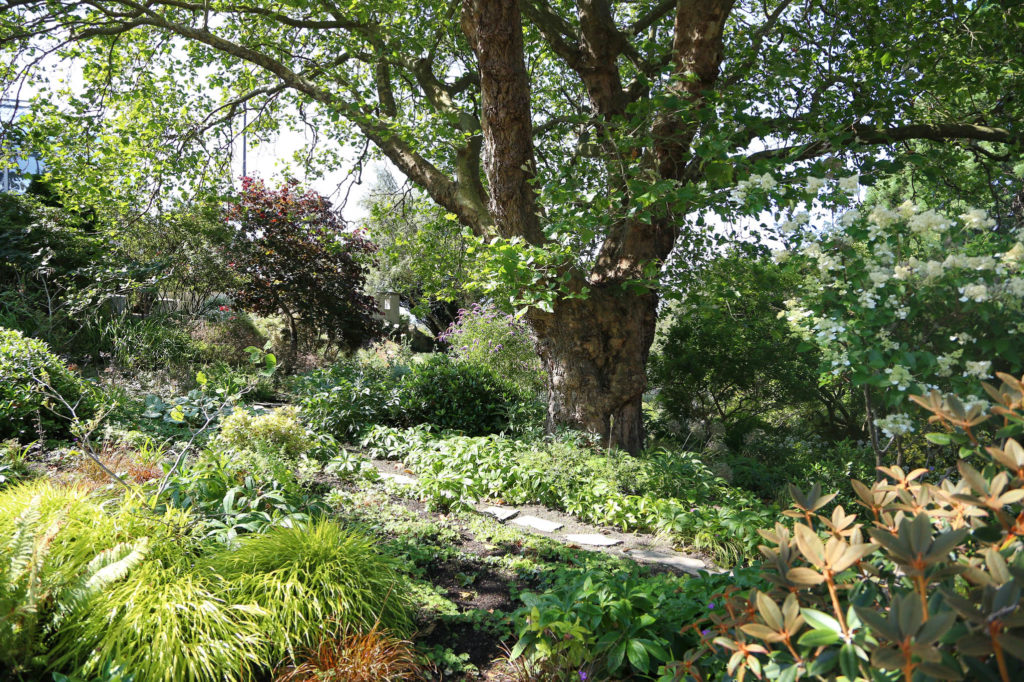Garry Oak Ecosystem: Complete Native Plant Guide
Appropriate native plant selection and care
Need help with your yard? Get your free quote today!
Get a Free Quote!
Garry Oak ecosystems are among the most endangered natural communities in Canada. This comprehensive guide from Ascent Yard Care will help you understand, preserve, and restore these unique Vancouver Island habitats through appropriate native plant selection and care.
Understanding Garry Oak Ecosystems
Ecosystem Characteristics
- Drought-tolerant environment
- Spring wildflower displays
- Summer dormancy period
- Winter moisture adaptation
- Shallow soil conditions
- Rocky outcrops common
- High biodiversity areas
- Seasonal changes
Growing Conditions
- Well-drained soils
- Full sun exposure
- Seasonal moisture
- Rocky substrates
- Shallow soil depths
- Winter wet conditions
- Summer drought periods
Key Native Plants by Layer
Canopy Layer
Garry Oak (Quercus garryana)
- Ecosystem cornerstone species
- Height: 15-25m
- Drought tolerant
- Wildlife habitat
- Long-lived
- Deep roots
- Cultural significance
Sub-Canopy Layer
Arbutus (Arbutus menziesii)
- Evergreen tree
- Height: 15-30m
- Rocky site adapted
- Drought tolerant
- Red bark
- Winter berries
- Wildlife value
Shrub Layer
Oceanspray (Holodiscus discolor)
- White flower clusters
- Height: 2-4m
- Summer blooming
- Drought tolerant
- Wildlife friendly
- Natural screen
- Butterfly attractor
Common Snowberry (Symphoricarpos albus)
- White berries
- Height: 1-2m
- Bird habitat
- Shade tolerant
- Winter interest
- Spreading habit
- Wildlife food
Herbaceous Layer
Common Camas (Camassia quamash)
- Blue-purple flowers
- Height: 30-60cm
- Spring blooming
- Cultural significance
- Meadow indicator
- Bulb perennial
- Historical food plant
Great Camas (Camassia leichtlinii)
- Taller blue flowers
- Height: 60-90cm
- Later blooming
- Cultural significance
- Meadow species
- Bulb perennial
- Robust growth
Shooting Star (Dodecatheon hendersonii)
- Pink-purple flowers
- Height: 15-30cm
- Early spring bloom
- Dormant in summer
- Spring ephemeral
- Delicate beauty
- Natural spreader
White Fawn Lily (Erythronium oregonum)
- White nodding flowers
- Height: 15-25cm
- Spring ephemeral
- Mottled leaves
- Delicate beauty
- Early bloomer
- Natural spreader
Ground Layer
Blue Wild Rye (Elymus glaucus)
- Native grass
- Height: 60-120cm
- Bunch forming
- Drought tolerant
- Wildlife value
- Erosion control
- Year-round interest
California Oatgrass (Danthonia californica)
- Native grass
- Height: 30-60cm
- Bunch forming
- Drought tolerant
- Wildlife value
- Strong roots
- Natural meadow
Seasonal Bloom Sequence
Early Spring (February-March)
- Satin Flower
- Spring Gold
- White Fawn Lily
- Shooting Star
- Blue-eyed Mary
Mid-Spring (April-May)
- Common Camas
- Sea Blush
- Spring Gold
- Western Buttercup
- Small-flowered Blue-eyed Mary
Late Spring (May-June)
- Great Camas
- Chocolate Lily
- Woolly Sunflower
- Field Chickweed
- Yellow Montane Violet
Summer (June-August)
- Yarrow
- Oregon Sunshine
- Self-heal
- Native Grasses
- Harvest Brodiaea
Restoration Guidelines
Site Preparation
- Remove invasive species
- Preserve existing natives
- Maintain soil structure
- Create proper drainage
- Protect from disturbance
Planting Techniques
- Use local genetic stock
- Plant in natural patterns
- Maintain proper spacing
- Consider succession
- Support biodiversity
Maintenance Practices
- Remove invasive species
- Limited summer water
- Natural debris retention
- Minimal intervention
- Monitor health
Common Challenges
Invasive Species Management
- Remove English Ivy
- Control Himalayan Blackberry
- Eliminate Scotch Broom
- Manage exotic grasses
- Prevent reinvasion
Wildlife Considerations
- Deer browsing pressure
- Bird habitat needs
- Pollinator support
- Small mammal habitat
- Natural corridors
Conservation Importance
Ecological Value
- Rare ecosystem type
- High biodiversity
- Species at risk habitat
- Cultural significance
- Climate resilience
Preservation Strategies
- Protect existing sites
- Create buffer zones
- Connect fragments
- Support pollinators
- Maintain diversity
Professional Support
Ascent Yard Care provides expert Garry Oak ecosystem services:
- Site assessment
- Restoration planning
- Native plant installation
- Invasive species removal
- Ongoing maintenance
Get Started
Contact us for a consultation to preserve or restore your Garry Oak ecosystem:
- Expert evaluation
- Custom planning
- Professional care
- Local knowledge
- Quality service
Ascent Yard Care: Professional Garry Oak Ecosystem Services | WCB Compliant | $5M Liability Insurance | Serving Greater Victoria Area
